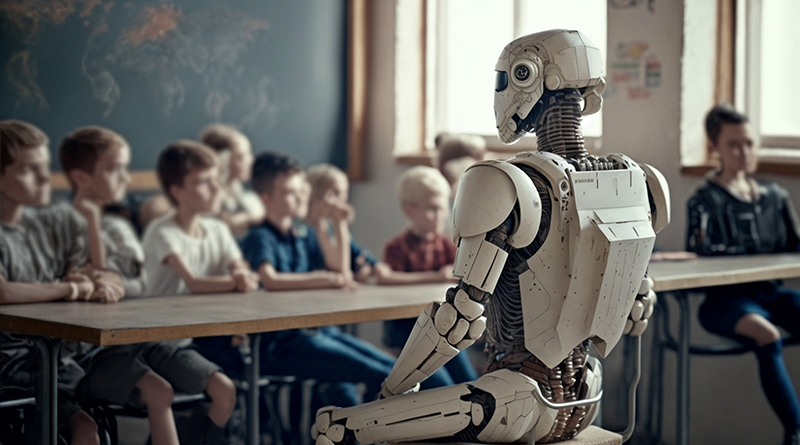Safely together: Exploring the world of collaborative robots
Are you ready to explore the potential of collaborative robots? Robotics technology has quickly emerged as a tool for businesses, from massive manufacturing operations to small start-ups. Collaborative robots are becoming an indispensable addition for organizations embracing advanced technological processes. To stay ahead in a rapidly changing world, now is the time to leverage this dynamic and forward-thinking resource.
In this article, we will discuss how these technological marvels can help your business get safely back up and running while exploring the world of collaborative robots. We’ll look at what they can do for productivity and efficiency, as well as help protect your employee’s health and safety with increased automation that eliminates direct contact.
What are collaborative robots, and how are they changing the way we work together in teams
Collaborative robot, also known as cobots, have revolutionized how we work in teams. Unlike traditional industrial robots that require specialized programming and safety fencing to operate, cobots are designed to work seamlessly alongside human workers in a shared workspace. These robots are equipped with advanced sensors and algorithms that allow them to sense and react to their surroundings, making them ideal for tasks that require close collaboration with people.
With the ability to assist with complex assembly tasks, packaging and palletizing, and even material handling, collaborative robots are transforming the manufacturing industry. As the technology continues to evolve, it’s clear that cobots are not just changing the work environment but enhancing it.
The advantages of using collaborative robots in the workplace
Collaborative robots offer numerous benefits in the workplace. First and foremost, they are easy to use, making them accessible for workers of all skill levels. It eliminates the need for specialized training or programming expertise, reducing costs and time spent on training.
Furthermore, cobots can work continuously without breaks or fatigue, increasing productivity and efficiency. They also have a smaller footprint than traditional robots, making them ideal for small or confined workspaces. Additionally, the advanced sensors and algorithms within cobots make them extremely safe to work alongside, further reducing the risk of workplace accidents and injuries.
Potential ethical concerns surrounding collaborative robots
While the benefits of collaborative robots are clear, there are also potential ethical concerns surrounding their use. One of the primary concerns is job displacement – as more tasks become automated with cobot technology, some fear it may lead to significant job loss for human workers. However, studies have shown that cobots create new job opportunities and increase job satisfaction for workers by taking on repetitive and monotonous tasks, allowing them to focus on more fulfilling work.
Another concern is data privacy and security. As cobots become more integrated into the workplace, ensuring that sensitive data and information are adequately safeguarded from cyber threats is essential.
How to ensure your safety when working with a collaborative robot
When implementing collaborative robots in the workplace, it’s essential to prioritize safety for both the robot and human workers. Proper risk assessments should be conducted before installing cobots, and regular maintenance checks should be performed to ensure their safe operation.
Employees should also receive proper training on working with cobots safely, including understanding emergency stop procedures and being aware of potential hazards. It’s also necessary to establish clear guidelines for how cobots and human workers interact, such as maintaining a safe distance from the robot.
Ways to potentially maximize efficiency when using a collaborative robot on the job
To potentially maximize the efficiency of collaborative robots, it’s essential to evaluate and optimize their use in your specific workplace carefully. It entails identifying tasks best suited for cobot assistance, analyzing the workflow and processes to pinpoint areas for improvement, and implementing streamlined strategies to utilize their capabilities thoroughly.
In addition to these measures, regular maintenance and updates should be performed to ensure that cobots operate at their peak performance. It includes conducting routine checks, promptly addressing potential issues, and staying up-to-date with the latest software upgrades.
Furthermore, exploring and utilizing cobots’ various features and capabilities is worthwhile. Their advanced sensors can enable precise and accurate interactions, while their programming options provide flexibility and adaptability to changing needs. By harnessing the full potential of cobots, businesses can significantly increase efficiency and productivity, ultimately driving growth and success.
Conclusion
Collaborative robots are revolutionizing the workplace by enhancing workers’ and businesses’ productivity, efficiency, and safety. With their advanced technology and ability to work alongside human counterparts, cobots are shaping the future of work. By understanding their capabilities and potential ethical concerns, businesses can leverage this dynamic resource to stay ahead in an ever-evolving world. Now is the time to embrace and explore the world of collaborative robots and discover how they can help your business thrive.

